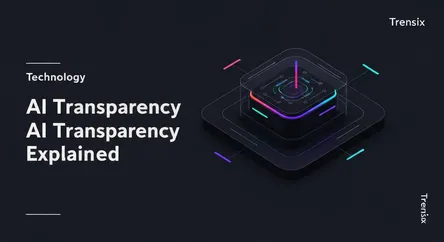Technology
AI Transparency Explained

Discover what AI transparency means, why it's crucial for trust, and how explainable AI (XAI) is shaping our future with accountable algorithms.
What is it?
AI transparency refers to the ability to understand how and why an artificial intelligence system makes a particular decision or prediction. Many complex AI models, especially in deep learning, operate as "black boxes," where even their creators can't fully trace the internal logic. Transparency aims to open this black box. A key component is Explainable AI (XAI), a set of methods and techniques that help human users comprehend the outputs of AI models. It’s about making AI's reasoning accessible, not just its final answer.
Why is it trending?
As AI systems are increasingly used for high-stakes decisions in finance, healthcare, and criminal justice, the demand for accountability has surged. Concerns over hidden biases, unfair outcomes, and errors have made transparency a critical issue. Regulatory bodies, like the EU with its AI Act, are beginning to mandate transparency to protect consumers and ensure fairness. Building trust is essential for widespread AI adoption, and users and organizations are unwilling to rely on powerful systems they cannot understand or scrutinize.
How does it affect people?
Transparency in AI directly impacts fairness and safety. For an individual, it could mean understanding why a loan application was denied or questioning an automated medical diagnosis. It empowers people to challenge decisions made by algorithms. For developers, it helps in debugging and improving models. For society, it ensures that AI systems are deployed ethically, reducing the risk of discriminatory practices and holding organizations accountable for their automated systems, ultimately fostering a more responsible and trustworthy technological future.